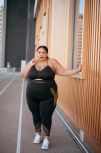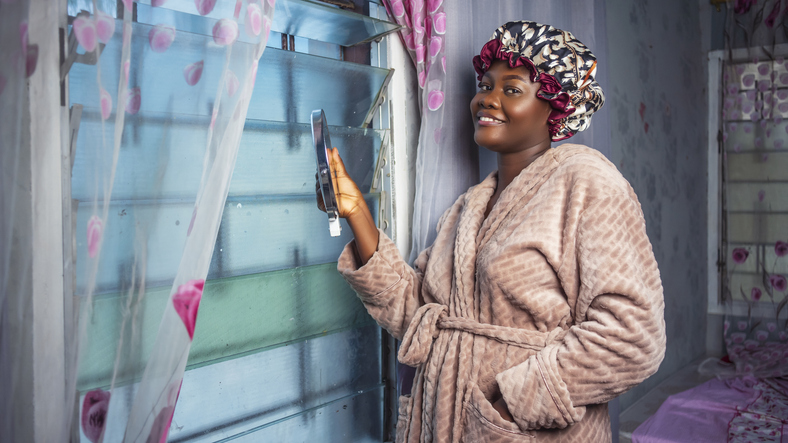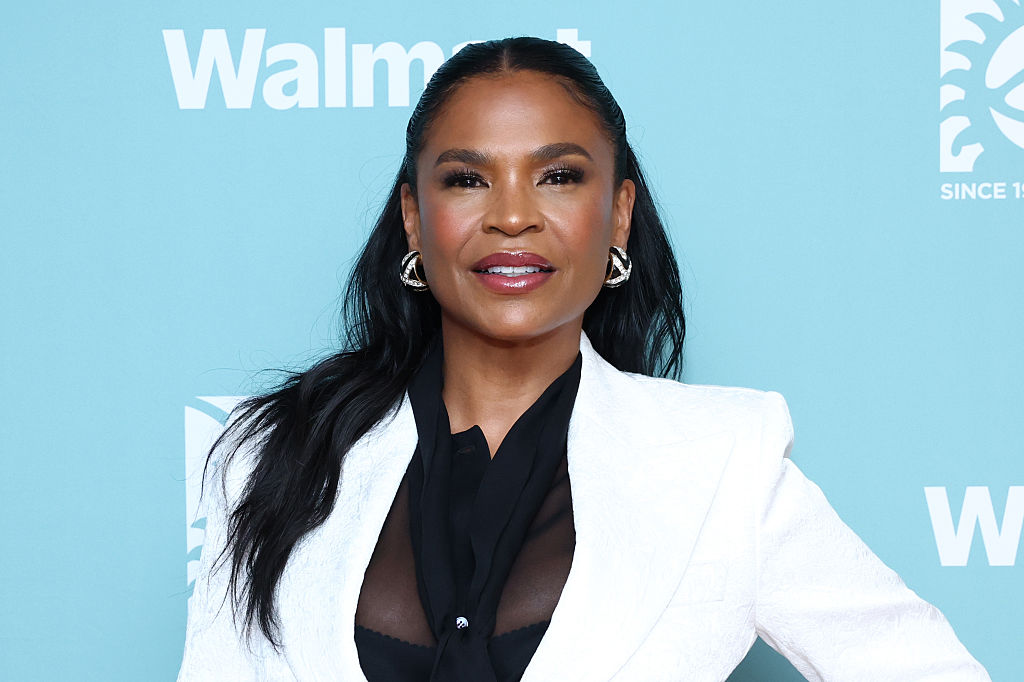The Unsung Icons of Black Women’s Fashion - Page 3
Share the post
Share this link via
Or copy link
In everyone’s list of black women that helped define fashion throughout history, there are the persistent regulars. Let’s see: Grace Jones, Dorothy Dandridge, Halle Berry, Lena Horne, Diana Ross and on and on. They’re known best because they were bombshells or they were fashion freaks–I mean that in a good way, Grace Jones. But behind all these big names and the people that count them as their fashion icons, there have been women like you and me, who aren’t all about the over-the-top glitz but about wearing what works for them and them only. They make their own trends. They are the unsung icons of fashion. So here’s a toast to the women who changed your wardrobe, your hair, your makeup and overall style, even though you didn’t realize it.
PAT EVANS
As if it weren’t already hard enough to be black in the late ‘70s, imagine the jarring criticism relayed to black women trying to set themselves apart in the modeling world. Many African American models got their start thanks to fairer skin and long straight hair, an attempt to promote European attributes, and to disguise African features. But while most conformed to the industry’s attempts to whitewash them, model Pat Evans decided to rebel against the status quo of fashion and assumed femininity by showing off her shiny chrome dome. Angered by the constant pressure to turn her fro into uncurving locs, and the lack of black representation in model management, Evans cut all her hair off. This move gained her more notoriety and even more bookings than ever before. The paradigm for black pride and confidence, Evans wore her bald head as a crown, accentuated by her audacious style, which included flowing dresses, furs, statement jewelry and feathered, dramatic eyelashes. She was so fine bald, the Ohio Players gave her a coveted cover on one of their albums.
DINAH WASHINGTON
Before Mary J. Blige, Lil’ Kim, Nicki Minaj and a slew of others threw on blonde wigs and dyed their manes gold to stand out, Dinah Washington showed ‘em how to do it right. Washington did a little bit of everything when it came to her music, as she was known by many as the “Queen of the Blues.” On top of trying an array of styles in blues and jazz, as well as trying a variety of men (eight times married), she also did many things with her hair. The blues singer used a spray formula to color her hair a darker blonde. The look, a massive change from her usual dark bouffants, garnered a positive response from fans and friends of the songbird, who praised her younger and more vibrant new look. Washington was one of the many forerunners of blonde locs and proved that the look can be just as intense against black skin as it can on fairer skin folk.
FLORENCE GRIFFITH-JOYNER
Florence Griffith-Joyner was known almost as much for her informal sense of style on the track as she was for her speed. Flo-Jo was once considered the “fastest woman of all time,” and in her short life (the athlete died at age 38 of an epileptic seizure) she set both world records in track and trends on the streets. Her overly-decorated nails, reaching up to six inches were her signature look. Multi-colored, polka-dotted and all, Griffith-Joyner showed her claws way before other long-nail rocking athletes like Serena Williams tried to. Her one-legged leotards were also a point of conversation as one muscular leg, tense and riveting, would speed into first place covered in metallics. On top of showing a sickening work ethic to her sport, Griffith-Joyner made it her side hustle to show women how to let your own personality shine through your attire, work it and be able to win at the same time.
NINA SIMONE
The pianist with the spellbinding voice, moving messages and Civil Rights background was as much a blessing to the music world as she was to the fashion one. The “high priestess” wore both afros and cornrows in her day and also defined the cosmetics that black women used in the ‘60s by embracing makeup that was reminiscent of Cleopatra and the Egyptians. Thick liner that wrapped around the eyes and gave her a sense of quiet attitude when she tickled the ivories. Simone embodied the Nubian look exuding an aura and courage rarely seen by newer generations. Like Pat Evans and many black women at the time, it was believed that Simone wore her hair in wrapped cornrows and a diverse number of ethnically inspiring ways as a protest to mainstream Western standards. But just like her music, I believe it was probably just her being her: effortless elegance at its best.
EARTHA KITT
Ms. Kitty as I’d like to call her, never did get the kind of props she should have received during her lifetime. Whether it was for her voice, her acting presence or her most dazzling style, she always seemed to sit in the back of people’s minds. But when she walked out of the house, or stepped in front of the silver screen, there was always a sense of bravado to her look. Some called it the look of a “maneater:” poofed up hair, bright sequins, animal prints, vivid colors and mounting accessories that screamed sexual power (think of her as Lady Eloise in Boomerang), Eartha Kitt had a look all her own. And while she was known to most as the original Catwoman, style icon should have come first on her resume.
SADE
If Janet Jackson, Madonna, and anybody else struggling to stay afloat in music has taught us anything, it’s that reinvention is important. For many, redundant styles and looks can stall their appeal to the wider public. Less appeal can equal irrelevance. But then there are the lucky few, or maybe just ones==or rather one, Helen Folasade Adu, better known as Sade, whose simple maintained beauty and genuine style can keep albums selling and fans at her feet. A Nigerian born artist, Sade has been captivating audiences since the ‘80s, and in all honesty, not much has changed about her style since that time. A writer for a blog from the Chicago Reader said it best: She goes for a classic look—ponytail, oversize hoop earrings, red lips, and slim-fitting, relatively understated clothing…Whether she’s in a simple white shirt or a cheongsam, she always looks like Sade.” And according to the people, that works just fine.
LAURYN HILL
Natty dreaded or hair twisted up, afro puff or dookie braids from her Sister Act 2 days, Lauryn Hill has always been a trendsetter. Whether she was standing out from her male counterparts in the Fugees rocking beanies, puffy coats, hoops and dark lipstick, or giving meaning to neo-soul style through eclectic prints and longs skirts, L.Boogie has quietly changed music and black women’s sense of style. Never too over the top, sexually that is, her attire always had an air of class, and sophistication when topped with a pair of thin frames to help her read her many acceptance speeches. Her makeup was always flattering, her eyebrows, to die for. And what can you say about her love for idiosyncratic platform heels and jewelry? While her approach to clothing has taken a somewhat dark, or dare I say, “tacky” turn as she’s come out of reclusion, we can always remember the days, at her peak in the late ‘90s, when Hill helped us love ourselves, think a bit higher and dress ourselves a little bit flyer.
AALIYAH
This isn’t one of those posthumous shout outs you give to people to appease their fan base or to help yourself sleep a little better at night. Rather, it’s stating pure fact: Aaliyah was the consummate trend setter throughout her entire career. To deny the fact that women bared midriffs, rocked men’s briefs, and Tommy Hilfiger like it was going out of style because of just a teeny bit of her influence would just be plain bogus. Why do you think people started wearing their bangs over one eye? Her style has influenced the likes of Ciara, Teyana Taylor and a great deal of others that ride the line between tomboy swag and sassy sexiness. Baby girl was a bandana baring chick, who liked oversized clothing and sneakers, but could steal the show in a gown at any given red carpet event. Now that’s a chameleon.
QUEEN LATIFAH
When Dana Ownes, or Queen, stepped on the scene in the late ‘80s with her towering hats, African inspired accessories and authoritative suits, she may have been a tad by our standards, but she took the fashion risks we’re missing out on today. Her look and her rhymes demanded respect, and her use of color and massively large accessories showed her style demanded it as well. She’s evolved tremendously since then and so has her clothing. We saw a bit more of the feminine side of Queen in her role as Khadijah James on “Living Single,” as the suits remained, but got softer, as well as the curls and coifs she rocked on the show. Today she is a plus size stunner in gorgeous gowns whether she’s at awards shows or hosting them. Plus, she makes us proud to be black women as the face of CoverGirl products, including her own Queen Collection for women of color.
EUNICE W. JOHNSON
Outside of taking the helms of _Ebony Magazine_ and starting the groundbreaking Ebony Fashion Fair, Eunice W. Johnson was a vision of respectable elegance when she wore her bright suits and ornate gowns. Johnson started producing Ebony Fashion Fair back in 1961, a popular traveling fashion show that helped establish black designers and help models get their foot in the door. And let’s not forget that cosmetics line! Cause if Revlon and Loreal’s products don’t get it by now when it comes to the shades of black folk, Halle Berry and Beyonce won’t make us feel better just cause it works for them. Having an innate sense of style that enabled her to dress her best, Johnson’s clothing was that of a businesswoman and innovator, as she wore furs and jewels that would make your cubic zirconia explode in envy. She is the embodiment of a fashion icon not only because she dressed so classic, but because she helped black women dress the same way and feel the same way due to her numerous successful business ventures.
-

Vontélle Eyewear Founders Score History-Making Licensing Deal With Paramount
-

She Tried It: Ivy Park Drip 2 and 2.2 Black Pack
-

She Tried It: Inahsi Naturals Aloe Hibiscus Leave-In Conditioner & Detangler
-

'Can't Walk While Black' — Pregnant Woman Ticketed For Walking On ‘Wrong Side’ Of The Road — But Her White Husband Wasn’t









